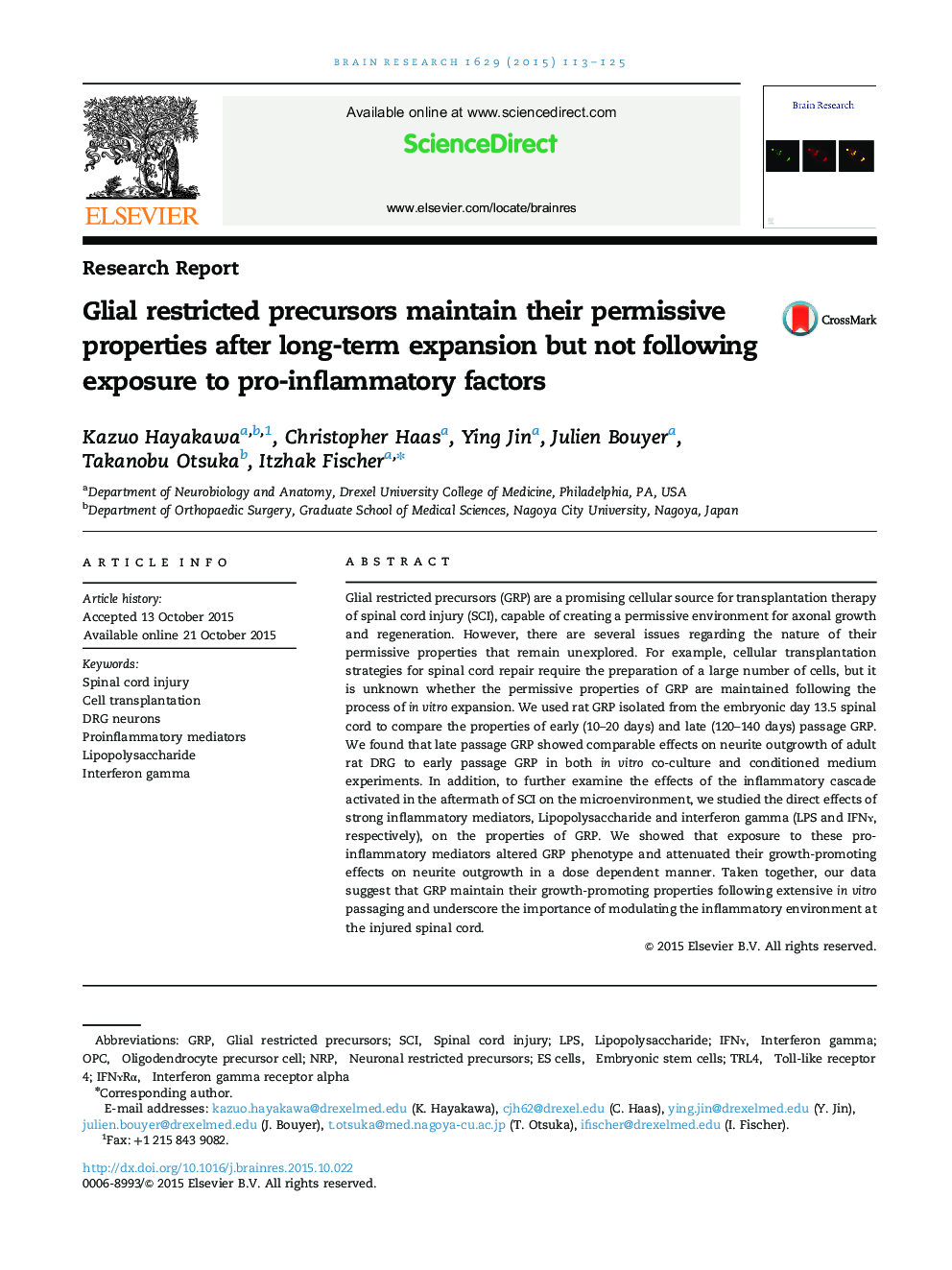| کد مقاله | کد نشریه | سال انتشار | مقاله انگلیسی | نسخه تمام متن |
|---|---|---|---|---|
| 6262755 | 1645516 | 2015 | 13 صفحه PDF | دانلود رایگان |
- GRP promoted neurite outgrowth of DRG using co-cultures and conditioned media.
- Late passage GRP (grown for 120 days) maintained growth-promoting effects.
- Treatment of GRP with inflammatory factors attenuated growth-promoting effects.
- Transplants of GRP could potentially be used even after prolonged in vitro expansion.
- Modulating the inflammatory could improve the efficacy of GRP.
Glial restricted precursors (GRP) are a promising cellular source for transplantation therapy of spinal cord injury (SCI), capable of creating a permissive environment for axonal growth and regeneration. However, there are several issues regarding the nature of their permissive properties that remain unexplored. For example, cellular transplantation strategies for spinal cord repair require the preparation of a large number of cells, but it is unknown whether the permissive properties of GRP are maintained following the process of in vitro expansion. We used rat GRP isolated from the embryonic day 13.5 spinal cord to compare the properties of early (10-20 days) and late (120-140 days) passage GRP. We found that late passage GRP showed comparable effects on neurite outgrowth of adult rat DRG to early passage GRP in both in vitro co-culture and conditioned medium experiments. In addition, to further examine the effects of the inflammatory cascade activated in the aftermath of SCI on the microenvironment, we studied the direct effects of strong inflammatory mediators, Lipopolysaccharide and interferon gamma (LPS and IFNɤ, respectively), on the properties of GRP. We showed that exposure to these pro-inflammatory mediators altered GRP phenotype and attenuated their growth-promoting effects on neurite outgrowth in a dose dependent manner. Taken together, our data suggest that GRP maintain their growth-promoting properties following extensive in vitro passaging and underscore the importance of modulating the inflammatory environment at the injured spinal cord.
Journal: Brain Research - Volume 1629, 10 December 2015, Pages 113-125
